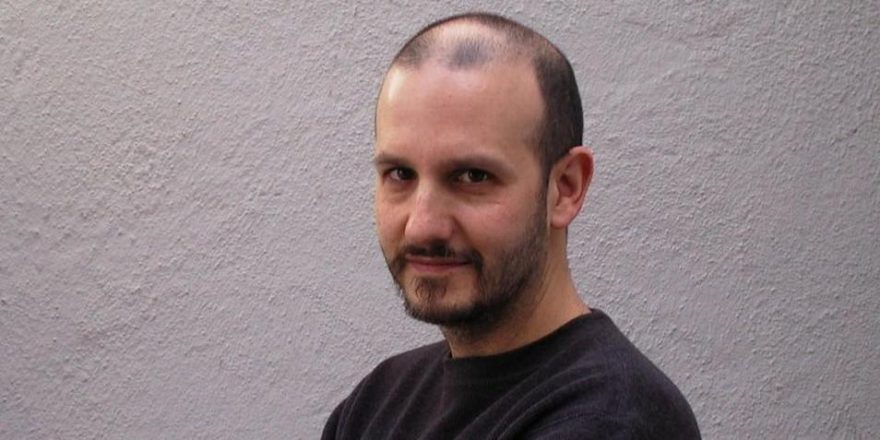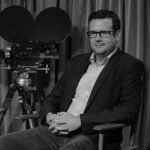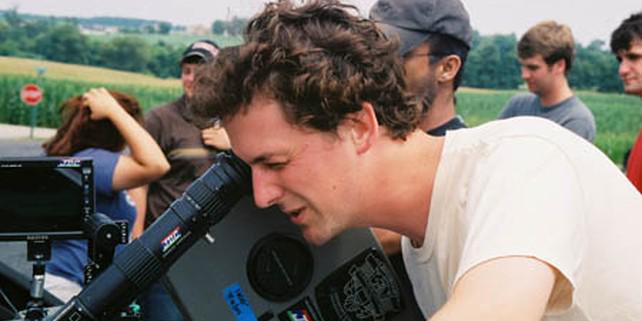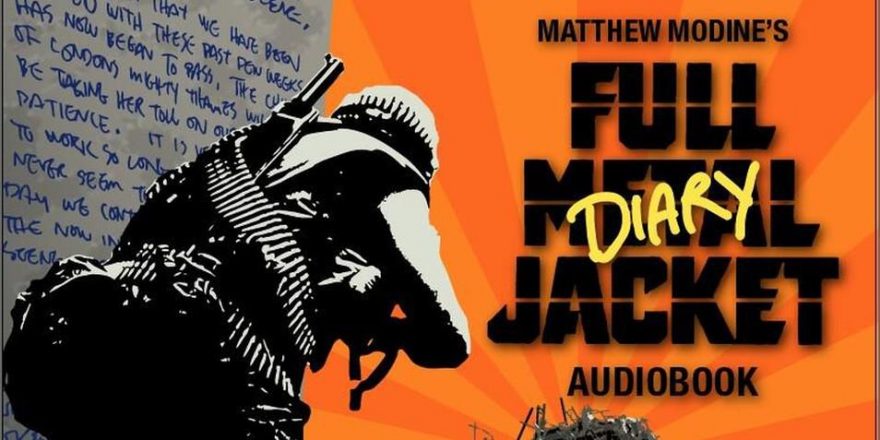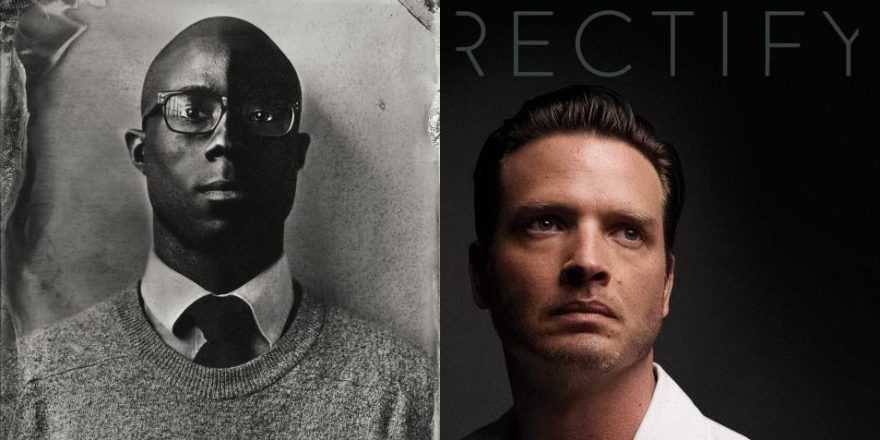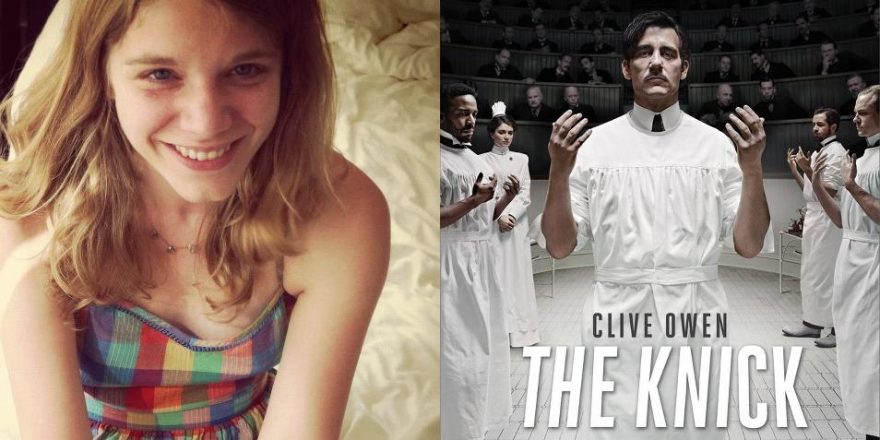Keith Gordon is one of those directors, like Albert Brooks or Stanley Kubrick, who has made far fewer movies than I would wish, but made them at a level of such consistent excellence that it seems churlish to complain.
Gordon has directed five features: The Chocolate War (1988), A Midnight Clear (1992), Mother Night (1996), Waking the Dead (2000) and The Singing Detective (2003). Each of them hits a creative sweet spot that any director would envy; they’re clear and direct yet immeasurably complex, profoundly philosophical yet accessible and moving, and highly original while responding to and deepening popular genres. The fact that Gordon remains somewhat of a cult figure has less to do with his abilities as an entertainer – which are considerable – than with the fact that his interests are so varied that they make him difficult to categorize. He’s not a brand, like Wes Anderson or Jim Jarmusch are, and he’s never made the same movie twice – he’s never even stayed loyal to one genre within the same film. Yet there is a consistency of vision in his work, and it extends into the arena where Gordon has been most active in recent years: television.
Most of the time, when an auteur takes on an episodic television assignment, his or her voice is almost entirely suppressed by the need to adhere to the format of the series in question. I bow to no man in my adoration of Joe Dante, for example, but I don’t see a lot of his personality in his recent TV work; a Dante episode of Hawaii Five-0 might be a little more stylish and dynamic than one directed by someone else, but the trenchant satirist and innovator of The Howling and Gremlins 2 is missing in action. This, of course, goes with the territory – if you’re brought on to helm an episode of NCIS or The Good Wife, your job is to serve the demands of ongoing storylines and characters, not to engage in visual experimentation or artistic expression. Yet in his work on shows as disparate as The Killing, Nurse Jackie and The Strain, Keith Gordon has managed to do both – his television episodes are both top-notch entries in their respective series and exquisite self-contained movies that fit perfectly within Gordon’s filmography. Working primarily in premium and basic cable, Gordon has figured out how to serve two masters – his own muse and his corporate employers – much in the same way that classical studio directors including John Ford, Douglas Sirk, and Howard Hawks smuggled personal statements into mass-appeal entertainments.
Gordon does this largely through technique, via a precise and sophisticated cinematic grammar that expresses and expands upon the singular worldview established in his features. There are certain devices that Gordon favors and utilizes across a wide array of subjects and genres, and while he never imposes an inappropriate style on his material, he almost always finds a way to merge his own preoccupations with those of the series on which he works. The best of his TV efforts – the “Beau Soleil” episode of The Killing, the pilot for the American remake of The Returned, and his contributions to the FX series The Bridge – are characterized by a reliance on wide-angle lenses and deep-focus compositions, reflective surfaces and frames within frames, and off-kilter establishing shots that emphasize the ways in which Gordon’s characters are dominated by their environments and crushed by systems they can’t fully understand or control. In Gordon’s hands, these devices do more than merely illustrate the action or comment upon that; they thematically link episodes across programs and even networks, and connect them to the intellectual and emotional concerns of his features.
“Beau Soleil” is perhaps the best example of Gordon applying his visual strategies to someone else’s material in a way that makes it completely, rewardingly his own. It’s the penultimate episode of Season One of The Killing, a series that follows two Seattle detectives as they investigate a murder tied to some of the city’s richest and most powerful denizens. In “Beau Soleil,” they learn some – but not all – of the secrets of Seattle’s would-be mayor Darren Richmond, a well-meaning crusader with a dark side. The murder mystery format and its connection to larger political structures enable Gordon to pick up where Mother Night and Waking the Dead left off, answering some of the questions those films raised while opening up new lines of inquiry.
Most of the time, when an auteur takes on an episodic television assignment, his or her voice is almost entirely suppressed.One of Gordon’s great subjects is the question of whether it’s possible to truly know others, especially those we love – and whether it’s possible to even know ourselves. Mother Night is his masterpiece in this regard: it follows an American writer who poses as a Nazi propagandist during World War II in order to serve the U.S. government, but plays his part so convincingly that he does more for the German cause than he does for his own. His German wife doesn’t know he’s a spy and believes he truly serves the Nazi mission; after the war, her younger sister reappears posing as his (by then dead) wife. Thus, at different points in the film, we have a love story where one or both characters is deeply in love with someone who doesn’t even exist, and in which the lead character plays his role so convincingly that he manages to deceive even himself. (It can’t be mere coincidence that so many of Gordon’s TV assignments are on programs – Dexter, Homeland, Rubicon – about characters and institutions hiding their true motives and identities.)
Waking the Dead takes a different tack, presenting a seemingly genuine romance between an idealistic, aspiring politician and his activist girlfriend that is cut abruptly short when the girlfriend is seemingly killed. When her lover starts to see her around the city, he doesn’t know if it’s a ghost, a hallucination, or if her death was faked, and in a more subtle but no less effective manner than in Mother Night, Gordon asks whether his hero really knows his lover at all or has created an idealized version of her in his mind. All of this ties in with Gordon’s obsession with the impossibility of certainty; over and over again in his films and television episodes, he probes his characters and relationships to provide a constant stream of new revelations. He’s saying that no matter how well we think we know people, there are always new layers to uncover – and some things that will always be hidden. His ultimate thesis seems to be that we can never attain complete understanding or absolute knowledge, but that we should never stop trying – an idea that’s perfectly conveyed by his style.
The frequent use of wide-angle lenses in “Beau Soleil,” for example, gives Gordon detailed, rich images; even when he’s focusing on a key character or two in the foreground, there is often discernible and important action going on far off in the distance, and occasionally he’ll employ camera movements in which different points of view are honored within the same shot. This gets to the heart of Gordon’s greatness, which is his breadth of understanding and compassion; his films often have arguments in which each side is equally valid, and in A Midnight Clear he goes so far as to find the common humanity between WWII American soldiers and their Nazi foes. In “Beau Soleil,” his deep-focus compositions give both the characters and the audience credit; repeat viewings of the episode reveal multiple – sometimes even contradictory – meanings.
The clarity of the wide-angle shots finds its counterpoint in Gordon’s love of mirrors, windows, and doorways that he uses to manipulate the image, sometimes expanding it (by placing characters on multiple planes of action), sometimes constricting it. There aren’t many directors who like a reflective surface more than Gordon – his work is filled with rooms and houses in which glass partitions and enormous windows abound, and whether or not these are part of the series’ designs before he comes on board, he makes the most of them when they’re there. One of the key locations in The Returned is a house with one side that seems entirely comprised of windows, and here and elsewhere Gordon utilizes this type of production design to alternately clarify and obscure, depending on the thematic requirements of any given scene. He often shoots his wide shots through windows, making his characters seem like bugs under microscopes, helpless and trapped creatures offered up for our study and consideration.
This is another interesting component of Gordon’s aesthetic: he exhibits deep feelings for his characters, yet repeatedly steps back with a chilly distance that places them within punishing, oppressive contexts. His establishing shots are like no other director’s; he consistently places his characters in odd, subservient positions within the frame so that they feel dwarfed by their surroundings, and he uses establishing shots not only to set up time and place but to reinforce the idea that his characters are all prisoners – of political and economic structures, of their own weaknesses, and of time itself. The relationship between the personal and the political is a particularly thorny one in Gordon’s oeuvre, and The Killing is perhaps the most striking and unsettling exploration of the question of how and why systems sacrifice individuals for the greater good – and whether or not it’s worth it. This combination of a humanistic impulse with a clinical, almost cynical acknowledgment of the most hopeless aspects of the human condition give Gordon’s output a truly distinctive tone – he’s like the unholy lovechild of Jonathan Demme and Stanley Kubrick.
Something he shares with Demme, in addition to his intensely generous and democratic approach to character, is an ability to synthesize that approach with some truly electrifying genre filmmaking. Perhaps the best instance of this comes in “Two Boats in a Helicopter,” the episode of HBO’s The Leftovers that Gordon directed last year. It’s an almost self-contained hour that focuses heavily on a preacher character in dire need of funds to save his church. As the preacher embarks on a journey to win – and then keep – the tens of thousands of dollars that he needs, Gordon fuses all of the techniques explored above with a jittery, mobile camera to generate an almost unbearable level of escalating tension. As a sheer exercise in suspense, the episode is worthy of Hitchcock or John Carpenter, and it’s made even more compelling by Gordon’s typically nuanced depiction of his lead character.
While Gordon does fantastic work as a gun for hire on The Leftovers and The Killing, his vision reaches even greater fruition on A&E’s The Returned; given that he directed the pilot episode, presumably he had a great deal to do with creating the look of the entire series. (Gordon also directed the pilot for Rectify, a series my Talkhouse Film colleague Barry Jenkins has covered with enthusiasm elsewhere on this site.) The show takes place in a small Washington town where people who have been dead for years mysteriously reappear as though nothing has happened; they and their loved ones are forced to deal with the ramifications. It’s a supernatural premise that Gordon treats with utter realism, much as he portrayed the “ghost” character Jennifer Connelly played in Waking the Dead (a title that would be just as appropriate for The Returned). This gets at another of the director’s interesting contradictions: he’s a spiritual filmmaker who shoots like a scientist – not just Kubrick crossed with Demme, but the even more unlikely combination of Kubrick and Malick. The question of what it means to be good – morally, spiritually, practically – is key in most people’s lives, but Gordon is one of the few directors to take it on as a major subject in all its complexity.
The Returned is a perfect summation of the work of this director whose characters have always been haunted; his movies are filled with ghosts, both literal and figurative, and with people coming back from the dead. It’s another reason he’s obsessed with reflective surfaces, windows and mirrors in which characters can disappear and reappear. The Returned is also one of the most intriguing mysteries in the career of a director whose inquisitive nature has made that genre the prevalent one across the entirety of his work. Virtually all of Keith Gordon’s films and television shows are mysteries, whether in the traditional, plot-driven sense or in the more figurative sense of being inquiries into the mysteries of the human heart, spirit, and mind (and, in the case of his Masters of Sex episode, the body and libido). I don’t know if Gordon seeks out television series that enable him to pursue this agenda, or if producers of these shows seek him out recognizing where his talents lie, or if his output has been, as it is for most directors, the result of a messy combination of intentions, opportunities, and sheer happenstance. However it came to be, his body of work marks him as one of our great cinematic seekers, and provides an essential case study in the possibilities television offers to those with the skill and intelligence to take advantage of them.


